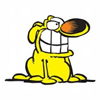Deep brain stimulation can be life-altering for OCD sufferers when other treatment options fall short
Published in Health & Fitness
The best initial treatment for OCD is a type of mental health therapy called exposure and response prevention. During these sessions, OCD sufferers are supported in gradually confronting their fears while also limiting the behaviors they have come to associate with providing safety.
For instance, someone with a fear of harming others might start by sitting near a butter knife and work their way up to holding a sharper knife to their therapist’s throat. They either learn that their fear does not play out, or – in the case of fears that cannot be disproved – that they can tolerate their anxiety or distress and move forward even in the absence of certainty.
The primary medications used to treat OCD are serotonin reuptake inhibitors, or SRIs/SSRIs, which are commonly prescribed for treatment of depression and anxiety. But when used for OCD, these medications are typically prescribed at much higher dosages.
Unfortunately, OCD is a chronic condition for most; studies show that only 65% of people with OCD respond to standard treatment, which is a combination of therapy and medication, and only about 35% recover completely. About 10% of individuals with OCD remain severely impaired, regardless of how intensively they are treated.
For this small group of individuals with severe and persistent OCD, deep brain stimulation – a procedure that fewer than 400 people with OCD have undergone worldwide – provides hope.
Patel, an internal medicine doctor, first came to my office in 2019. He is one of 13 patients I’ve worked with to provide deep brain stimulation for OCD and other psychiatric illnesses.
He has suffered with OCD since the age of 4 or 5, with obsessive fears about germs, contamination and social interactions, among other things. He learned to function and succeed by shaping his life around his rituals – for example, by not consuming water or food at work so that he would not need to use public restrooms.
Patel, like many others with OCD, is conscientious, thorough and compassionate, traits that contribute to his success as a physician. However, before deep brain stimulation, most of his life outside of work was occupied by painful, consuming rituals. These included scrubbing himself with harsh chemicals for hours.
He had explored every treatment he could find, seeing 13 mental health providers since high school and participating in years of exposure therapy. He had tried at least 15 different medications, all with little benefit. Then he learned that deep brain stimulation was available at the hospital where we both work.
Deep brain stimulation requires a neurosurgical procedure to place thin electrodes into deep structures of the brain, specifically a region known as the ventral capsule/ventral striatum. These electrodes deliver electrical currents to the brain. The current is produced by pulse generators in the chest that look much like cardiac pacemakers. They are connected to the electrodes in the brain by wires tunneled beneath the skin.
...continued







Comments